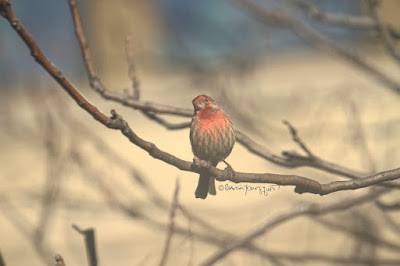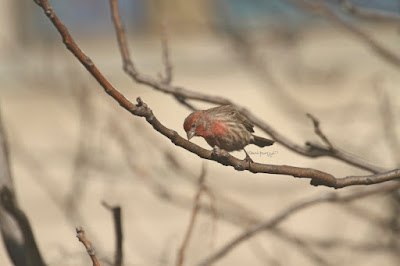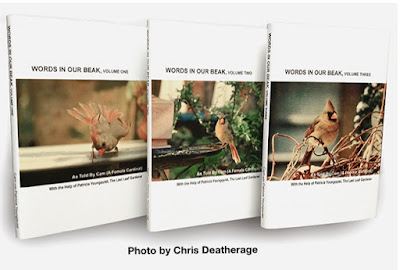I have only been able to take a couple of walks in my nearby parks since March (2020) because the coating on my lenses of my prescription lenses has worn off and replacing them is out of my financial reach at this time.
Unfortunately since the coating is damaged, my glassses steam up constantly when I wear a
face-mask and I can't see where I am going which is very frightening.
I have tried many "home remedies" to prevent the steaming but because the issue has to do with the coating, my battle is endless.
Moreover, due to the fact that I fell last January (which resulted in my breaking my
Greater tuberosity), I am feeling vulnerable when it comes to the prospect of falling, SOOOO... I have had to stay at home more than I would like to, and I miss the parks!
Therefore, my spirits were lifted the other day when I discovered that a lone male
House finch was spening some of his time perching on the branches of
Ailanthus trees in the courtyard (as evidenced in the imagess atop this posting).
He also spent time as well as perching on the branches of the
crabapple tree growing in
my garden which can be seen in the photos directly below.
This bird type is no stranger to issues with eyesight. He had had some close calls which is something I discuss in volume one of my book series.
These books make a nice gift anytime of the year but are especially nice for the upcoming holidays of
Chanukah (which begins this Thursday, 12-10-2020),
Christmas (will be here in eighteen days on 12-25-2020) and
Kwanzaa (which will begin in nineteen days on 12-26-2020).
Additionally some of my images of House finches (both male and female) have been rendred on to different surfaces for
wall art (as well as on to
greeting cards) by Fine Art America (FAA). Please visit my various FAA pages for details.








No comments:
Post a Comment
Note: Only a member of this blog may post a comment.